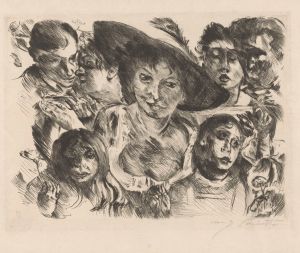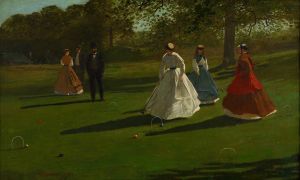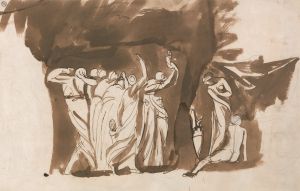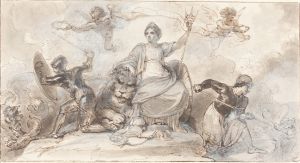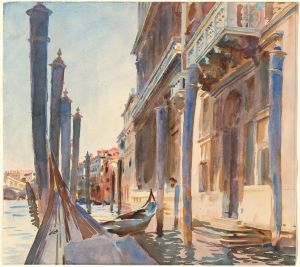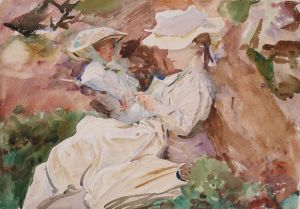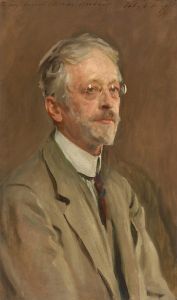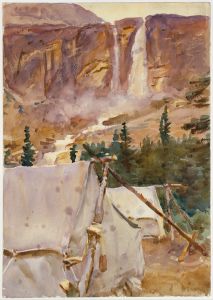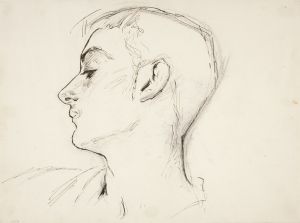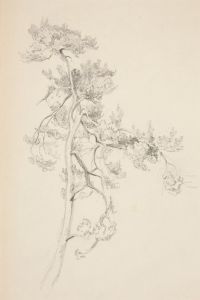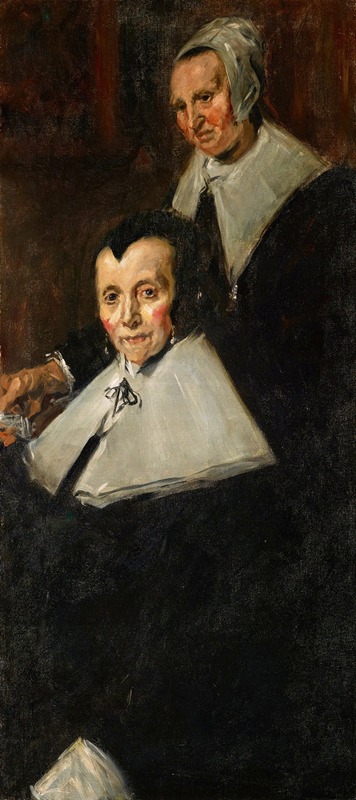
Detail of Two Figures from ‘The Regentesses of the Old Men’s Almshouse, Haarlem,’ after Frans Hals
A hand-painted replica of John Singer Sargent’s masterpiece Detail of Two Figures from ‘The Regentesses of the Old Men’s Almshouse, Haarlem,’ after Frans Hals, meticulously crafted by professional artists to capture the true essence of the original. Each piece is created with museum-quality canvas and rare mineral pigments, carefully painted by experienced artists with delicate brushstrokes and rich, layered colors to perfectly recreate the texture of the original artwork. Unlike machine-printed reproductions, this hand-painted version brings the painting to life, infused with the artist’s emotions and skill in every stroke. Whether for personal collection or home decoration, it instantly elevates the artistic atmosphere of any space.
"Detail of Two Figures from ‘The Regentesses of the Old Men’s Almshouse, Haarlem,’ after Frans Hals" is a painting created by the American artist John Singer Sargent. This work is a study or interpretation of a section of the famous group portrait "The Regentesses of the Old Men’s Almshouse" by the Dutch Golden Age painter Frans Hals. Hals's original painting, completed in 1664, depicts the regentesses, or female administrators, of an almshouse in Haarlem, Netherlands, and is celebrated for its dynamic brushwork and psychological depth.
Sargent's version focuses on two figures from Hals's composition, isolating them from the larger group. This approach reflects Sargent's admiration for Hals's technique and his interest in studying the works of Old Masters. Sargent was known to have traveled extensively in Europe, visiting museums and galleries to study and copy works by artists he admired. His engagement with Hals's work demonstrates his fascination with the loose, expressive brushstrokes and the ability to convey character that Hals mastered.
The painting by Sargent is not a direct replica but rather a detailed study that captures the essence of Hals's style. It showcases Sargent's technical skill and his ability to interpret the work of another artist while maintaining his own artistic identity. This piece is part of a broader tradition of artists copying or reinterpreting works by their predecessors as a form of learning and homage.
The exact date of Sargent's painting is not definitively documented, but it is believed to have been created during one of his study trips in the late 19th or early 20th century. The work is often cited as an example of Sargent's deep respect for the Dutch Golden Age and his ability to translate its techniques into his own practice.
The painting is held in a private collection or museum, though specific details about its current location are not widely available. It remains an important example of Sargent's engagement with art history and his dedication to mastering the techniques of past masters.







